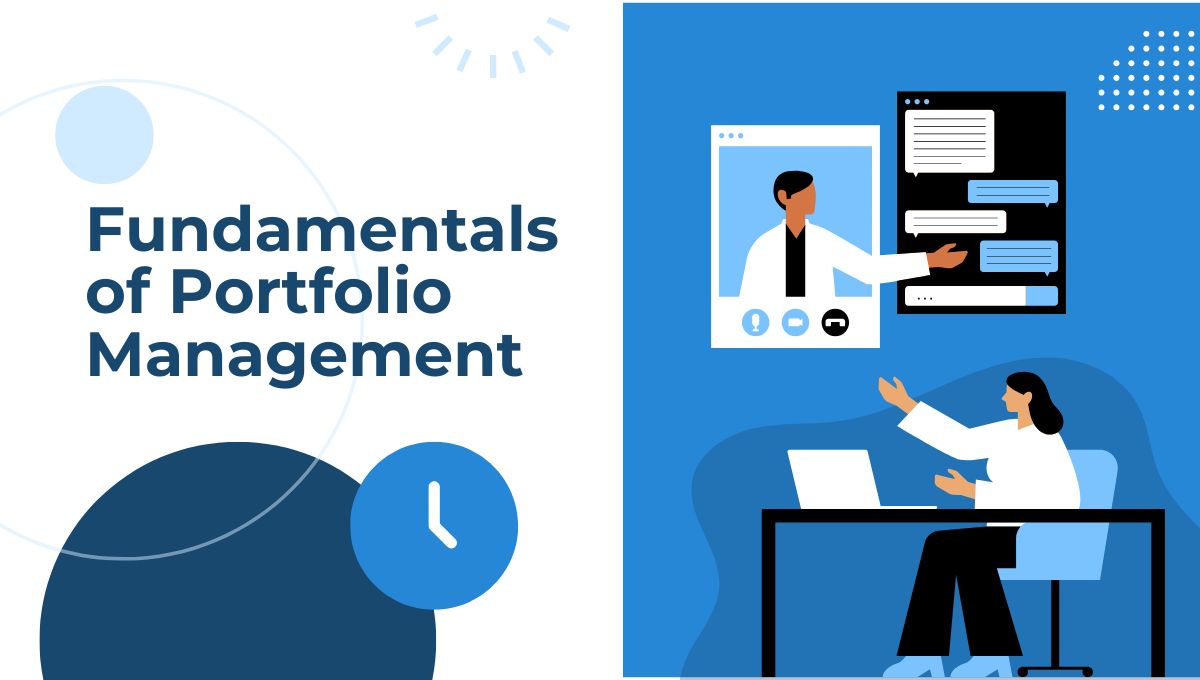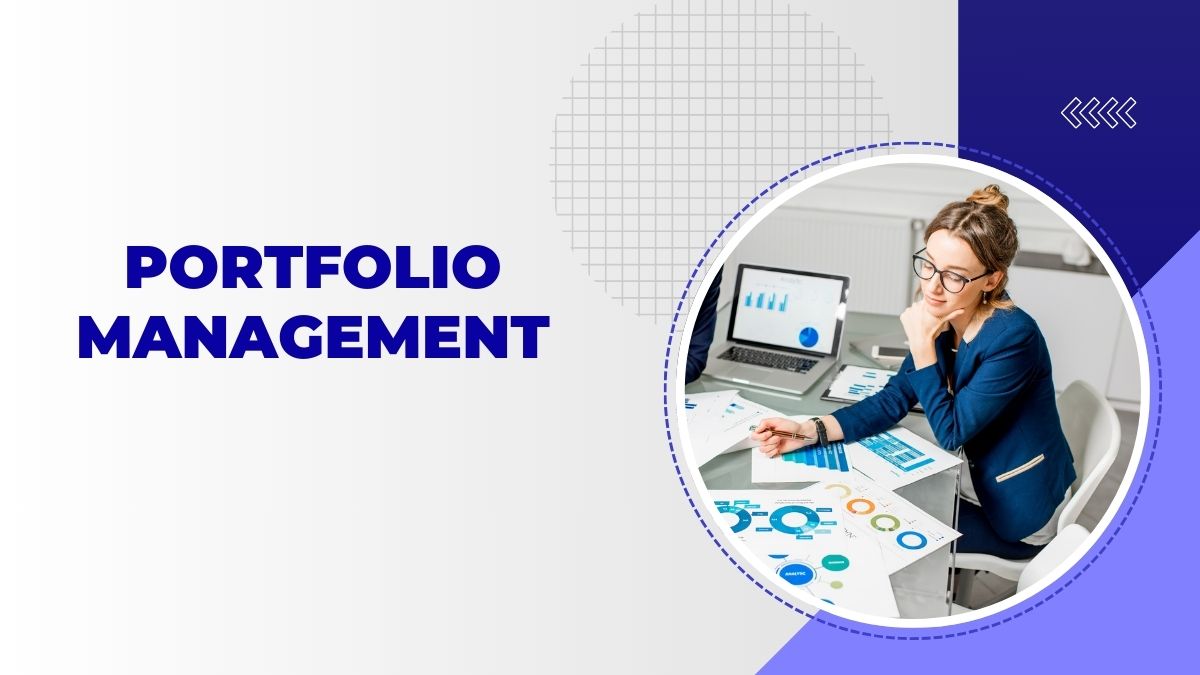Within the investment domain, portfolio management is multifaceted, comprised of numerous strategies and methodologies aimed at maximising returns at the least possible risk. For this reason, mastering the basic concept of portfolio management was always a vital subject for new investors but also for other experienced investors working their way toward successful financial goals.
What is Portfolio Management?
In this era of a dynamic business environment, Effective portfolio management involves many aspects some of which include decision-making regarding investment mixes and policies, matching goals to investments, assessing risks to performance, and asset allocation among others. It takes into consideration both the micro and macro investment aspects ensuring that the investment objectives, risk, and duration of the investor’s portfolio are in tandem with the individual investments comprising the portfolio.
Key Concepts in Portfolio Management
– Diversification: Diversification is one of the fundamental concepts when comes to investment management. It is the investment of the investor across different classes of risk, industries or countries. Therefore, by diversifying, investors as well shield their portfolio from considerable losses because different assets tend to perform differently.
– Asset Allocation Techniques: Asset allocation refers to the process of distributing the total funds among different asset classes i.e. stocks, bonds, real estate, cash etc. When it comes to diagnosis of investors risk tolerance and portfolio return expectations, the importance of these asset allocation techniques becomes apparent. Such techniques could be strategic, geared towards the long term, or tactical, fitting to the market situation.
– Risk Management in Investing: In investing, risk management plays a critical role, especially in safeguarding the investor’s funds as well as earning reasonable profits consistently. This means recognising, assessing, controlling and taking measures designed to lessen any risks causing a loss to the investment haven. Some of these measures include use of stop-loss orders, investment diversification and periodic assessment of the investments and the corresponding adjustments.
– Investment Strategies: Investment strategies are defined as methods employed to influence making investment choices. Some of these can be growth seeking especially towards capital growth while others can be focused on income generation by provision of consistent cash flow. Typical strategies include value and growth and index investing strategies but each of them has different levels of risks and returns.
Strategies for Successful Portfolio Management
- Understanding Risk Tolerance: The first step for portfolio management is to understand the risk tolerance of the investor. It measures how much risk an investor can allow or is willing to accept from the financial situation, set investment goals, and psychological comfort with variability in markets.
- Defining Investment Goals: The investment objectives give meaning to the portfolio management process. It enumerates definite goals toward which investment efforts can be directed, such as capital protection, income generation, capital growth, and tax protection among others. The said targets should be smart in nature. That is, those targets should be Specific, Measurable, Attainable, Realistic and Time-bound in nature.
- Selection of the Suitable Techniques in Asset Allocation: These methods are almost fundamental and perform elementary functions so as to consolidate the portfolio in line with the current investment goals and risk tolerance. Strategic asset allocation sets target allocations that are followed by periodical rebalancing activities to maintain the targets. Tactical asset allocation permits short-term deviations driven by market conditions.
- Implement investment strategies: The act of pursuing these investment objectives, therefore requires properly defined investment strategies that chase the realisation of their objectives through the use of your portfolio. A value investing strategy concentrates on stocks with sound fundamentals but at undervalued prices; growth investing focuses on companies having enormous growth potential. Index investing is about replicating the performance of a market index.
- Continuous Monitoring and Rebalancing: Portfolio management involves monitoring continuously and rebalancing periodically. A periodic review of the portfolio can help identify underperforming assets, which leads to necessary adjustments to stay close to the desired asset allocation and risk profile.
The Role of the CFA Course in Portfolio Management
The CFA course is highly in the investment world and ensures good knowledge and skills necessary for effective portfolio management. The Curriculum of the CFA broadly covers important topics such as investment strategies, risk management in investing, and asset allocation techniques.
- Holistic knowledge base: The CFA course is well-settled in the funding and investment management style, encompassing advanced portfolio management techniques. It equips professionals with analytical skills to assess funding opportunities and make informed decisions.
- Practical Skills: The practical skills add to the theoretical knowledge maintained by the CFA course; investment strategies are applied, risk management in investing practice, and the asset allocation technique in real-life conditions and portfolio management challenges.
- Ethical Standards: This is something the CFA programmes emphasize: ethical standards, requiring portfolio managers to hold their profession to the very highest levels of integrity and professionalism in their careers. Therefore, it forms an ethical foundation, obtaining the trust of the clients and the credibility of the investment profession.
- Global Recognition: A portfolio manager finds the global recognition of the CFA designation attractive as it stands for a high level of commitment to excellence and training, the qualities demanded in the dynamic field of portfolio management.
FAQs
- What is the objective of portfolio management?
Portfolio management aims at achieving the highest returns with minimal risks in line with your goals for finances, your capacity for risk, and time constraints. It involves balancing your investments and the process of diversification using several strategies in order to formulate a balanced portfolio.
- How does asset allocation impact my portfolio?
Forming your portfolio’s risk and return is of vital importance through asset allocation. To put it in layman’s terms, it will spread investments over various asset types such as cash, bonds, real estate, and equities. Basically, asset allocation reduces the level of risk that can be taken against maximising the returns that are likely to be generated. It will help you achieve the right mix to help you align with your goals and market changes.
- How can the CFA course help me in portfolio management?
The CFA course is an excellent resource for portfolio management. Its critical components include investment strategy and risk management, as well as asset allocation. Furthermore, it is dedicated to ethics and practical skills, thereby making an excellently prepared professional in matters of investment management and stimulating career growth.
Conclusion
Portfolio management is a dynamic and complex process involving aspects of investment, risk management in investing, and techniques of asset allocation. Understanding these can help investors form solid portfolios that will assist them in achieving their financial goals and bearing the amount of risk they can afford.
The CFA course plays a very important role in developing the know-how for effective portfolio management. The core idea behind it is to provide deeper knowledge of what constitutes key concepts and strategies, coupled with skills in quite intricate investment matters.
Regardless of whether one is a beginner or a seasoned professional, the beginning of successful long-term financials portrays an understanding of portfolio management. Learning and making adaptations to market changes will help optimise the investment portfolio and ultimately ensure that financial objectives are achieved.



